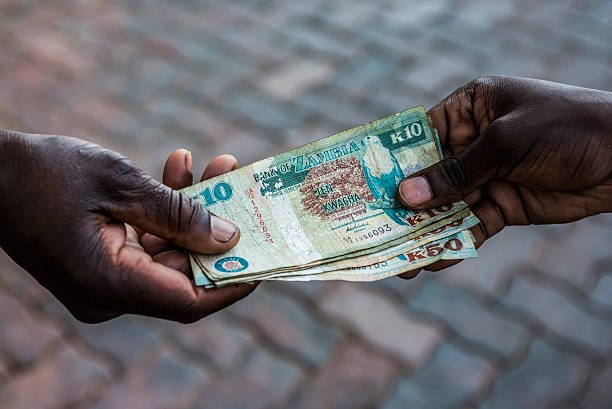• Debt restructuring deal has come with optimism regarding the future of the economy in terms of its performance.
• This has resulted in high demand for the US dollar.
• In the midst of growing demand for FX, liquidity has remained low in the market.
The Kwacha has continued depreciating and is now trading at about K19 to one United States dollar.
The currency has opened the market today trading at K19.08 and K19.45 per US dollar after closing Wednesday’s trading session at K18.91 and K19.28 to the dollar.
Despite the positive outlook resulting from the conclusion of the debt restructuring programme, the currency continues to face persistent inflationary pressures.
According to financial market players, the depreciation of the local unit continues to be mainly driven by the demand for foreign exchange against limited supply.
In the month of July, 2023, the Kwacha depreciated from K17.73 per US$ to K18.51 US$, representing 4.35%.
Continuous weakening of the Kwacha, against major convertible currencies is causing serious challenges for small and medium businesses in the country.
Recently, Energy Regulation Board (ERB) attributed the increase in fuel prices for August 2023 to movements in the exchange rate as well as international oil prices.
Hence, higher fuel prices on the domestic market resulting from the weakening of the Kwacha, are making it expensive for SMEs to run their businesses.
According to an Economist, the recently secured debt restructuring deal has come with optimism regarding the future of the economy in terms of its performance.
Gerald Soko told Money FM News in an interview that this has resulted in high demand for the US dollar mainly coming from the energy and agriculture sectors.
Mr. Soko noted that foreign exchange (FX) demand is improving in the market while liquidity has remained tight, hence a combination of these two factors is putting pressure on the local currency.
“The debt restructuring that Zambia recently secured has come with optimism as regards the future of the economy in terms of its performance. So what we see is increased demand for FX and part of that is coming from the energy sector and I think the agriculture sector is also trying to position itself in terms of procuring inputs for the next farming season, and I think the private sector is also importing inputs in terms of trying to improve their production capacity.”
“In the midst of growing demand for FX, liquidity has remained low in the market and a combination of those two factors is putting pressure on the local currency and that is why we are seeing the Kwacha depreciation,” Mr. Soko noted.
Mr. Soko also observed that despite Bank of Zambia’s weekly injection of US dollars into the market, the support has been limited compared to the amount of FX demand in the market.
“I think the size of depreciation this week is around 3.3 percent. The Central bank has been supporting the market on a weekly basis, last week we saw them come and sold over US$30 million to the market just to help the commercial banks also to service the needs of their clients. And so they have been helping only that the support itself has been limited compared to the amount of FX demand that is in the market,” he said.
A stable exchange rate and strong Kwacha is crucial as it helps support production and increases exports so that the country’s domestic currency can have long-term natural strength and stability.






